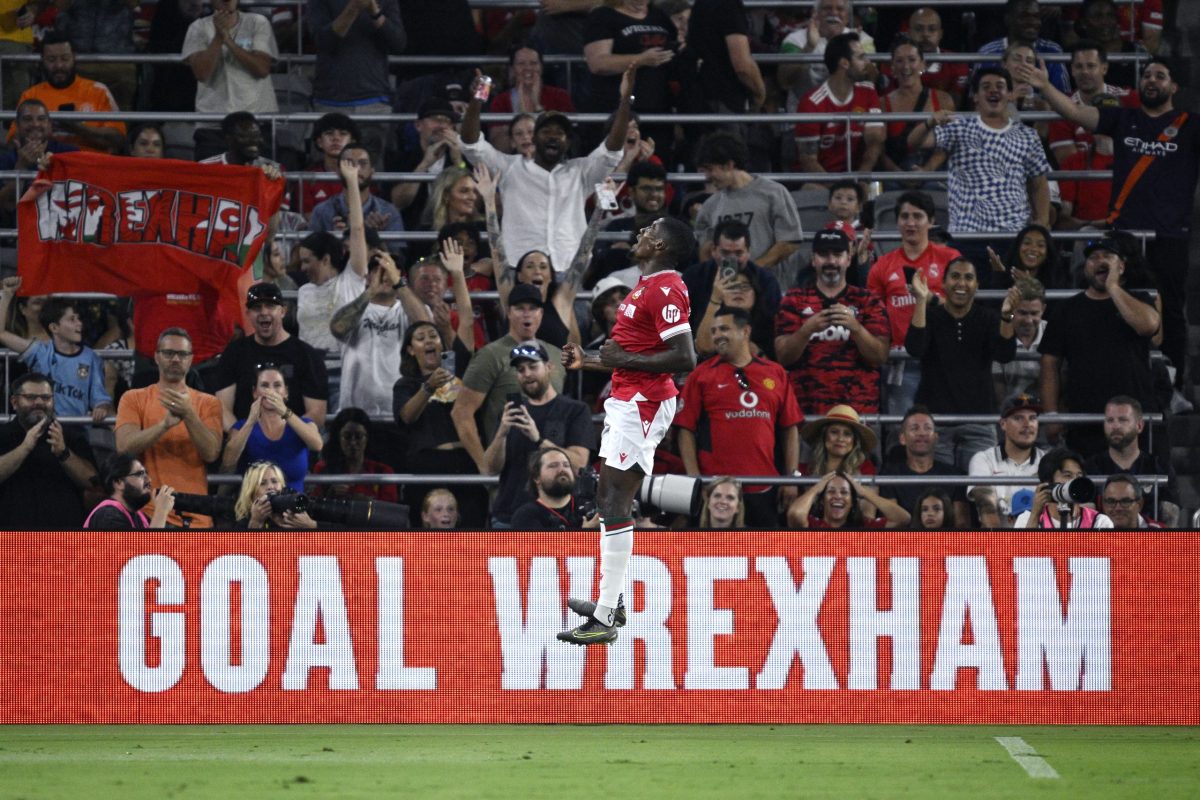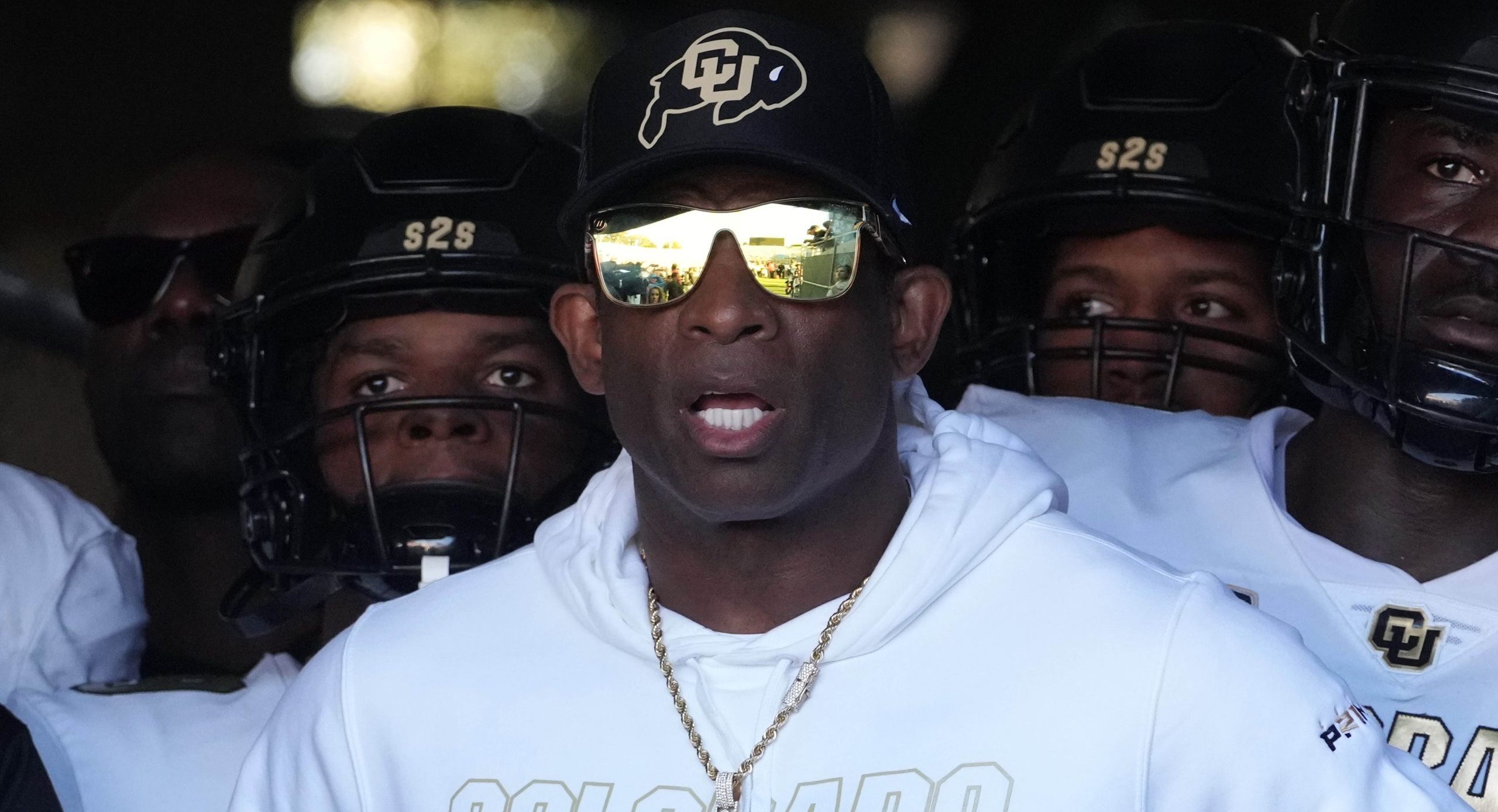On Tuesday, Awful Announcing pointed out that from 8 a.m. to 2 p.m. ET, ESPN had not had one discussion about the start of the MLB playoffs, minus a few ad reads.
No debate. No discussion. No guests. No predictions. No matchups analysis. Nothing.
Despite having exclusive rights to the Wild Card Series, baseball couldn’t break the NFL and NBA content blockade. We’ll get into why that is in a moment.
ESPN has TV rights to the Wild Card round of the MLB Postseason that starts today.
A short promo for today's games was read twice on Get Up and once on First Take.
According to a closed captioning search, they were the only mentions of the MLB Playoffs from 8-2 on ESPN today. pic.twitter.com/A6MadVUlQE
— Awful Announcing (@awfulannouncing) October 3, 2023
Obviously, we weren’t the only ones to notice.
Twitter user @keonmainor1 asked the same and tagged multiple morning shows and personalities across FS1 and ESPN and specifically questioned, “Why don’t the majority white sports get the same scrutiny/coverage as the NFL and NBA.”
Ryan Clark has long been a pretty engaging and transparent person on Twitter and was happy to field the question.
You think it has to do with the color of the athletes or popularity of the sport bro? Cmon man everything ain’t racism. Those football & basketball are more popular and more people tune into games. Also tune in to hear about them. It’s not all scrutiny. It’s also praise https://t.co/3cmjqcEr9n
— Ryan Clark (@Realrclark25) October 5, 2023
We’ll get into ESPN and FS1’s decision to ignore MLB and other sports in a second. First, it’s prudent to note that Ryan Clark and Dan Orlovsky are former football players. Their expertise is commenting on the NFL and college football. Clark now hosts Inside The NFL. He’s more of a specialist, and most former athletes fit into that bucket.
That is a long way of saying that they are often guests who rotate on and off these shows, and almost always talk football, which is done by design. It’s not like they are Stephen A. Smith, Skip Bayless, Mike Greenberg, or Pat McAfee, who the shows are built around and have input on these types of things alongside producers and programming executives.
I don’t talk about it ever. I do football https://t.co/vhVgCidSvN
— Ryan Clark (@Realrclark25) October 5, 2023
But putting that aside, the question is still valid—why do ESPN and FS1 largely just stick to 2-to-3 sports and ignore everything else? If the network pays hundreds of millions to air NHL, college basketball, MLB, tennis, golf, etc., why not spend some time talking about those sports as well?
The answer is pretty simple. The data shows viewers change the channel or stop watching at a higher rate when they talk about those sports.
Early in First Take’s existence, famed then-ESPN Producer Jamie Horowitz fought for this programming change with the old guard at ESPN. As chronicled in The Athletic, data showed viewers just didn’t want the variety of debate/discussion that matched the sports that ESPN actually aired.
Top ESPN executive John Walsh once brought up the fact that the U.S. Open was going on in New York. Horowitz, according to a person present, responded that his research showed the audience didn’t care about tennis. Walsh countered that ESPN didn’t ask its readers for input on what to put on the front page.
It was a central point of conflict: Was “First Take” obligated to operate within the limits of journalism, or was it just entertainment?
Then-ESPN president John Skipper happened to be in attendance in San Francisco when Giants pitcher Matt Cain threw a perfect game in June 2012. When “First Take” ignored the feat, it caused hand-wringing back in Bristol. Walsh, a veteran journalist who had come up in the world of newspapers, went as far as tracking how many times the show mentioned America’s pastime. ESPN did pay to televise baseball, after all.
“I still have a belief that a perfect game or a grand slam tennis event or whatever it is should, in the course of a couple hours, get some attention, somewhere, somehow,” said Walsh, who retired in 2015. “But that might be my age. Remember, I was the old guy.”
Horowitz and his crew kept countering with the minute-by-minute data that showed what audiences did or didn’t care about. Play the hits.
If you’re not familiar with minute-to-minute data, it essentially shows you the audience size from, you guessed it, minute to minute. People are naturally coming to a channel like ESPN each minute and other people are leaving each minute. During more popular segments, minute-to-minute data shows what topics are keeping people from moving onto another channel or turning off their TV. Those segments are holding more people from leaving the channel while new viewers are increasing the viewership. Think of it as a bar with new people coming in while nobody is leaving. After a while, if nobody leaves and people keep coming in, the bar is packed.
ESPN is not the only network to use this type of data. Last year, The New York Times reported that Fox News was relying on minute-to-minute to “show there’s an appetite among its audience for talking points embraced by white nationalists.”
Horowitz is long gone but the usage of minute-to-minute data and the commitment to “playing the hits” is now dogma at ESPN and FS1. Both networks strictly adhere to a menu of topics that almost entirely focus on the NBA and the NFL, including rubbernecking topics like LeBron James and the Dallas Cowboys. That doesn’t change even when it’s the MLB postseason and your network will be airing playoff games.
Additionally, things haven’t gone that well in the past when First Take has tried to cover MLB. Two years ago, Stephen A. Smith was a piñata on social media for xenophobic comments he made about Shohei Ohtani. And he’s made it clear that he doesn’t much care for the sport or its fans.
Regardless of your bravado and delivery, it’s hard to fake enjoyment of a sport when you really couldn’t care less. The takeaway from Smith talking about the MLB is pretty clear. He couldn’t fake talking about baseball, and more than likely the onslaught or the criticism left a pretty sour taste in his mouth. The appetite for these one-offs seems to have gone down considerably less.
Many don’t like the reality that America’s former pastime can be ignored all year round on major shows and platforms, but it seems clear that this status quo is here to stay.
If you’re annoyed and disapprove, your best bet is to actually change the channel and go to MLB Network, NHL Network, the Tennis Channel, or whatever second or third-tier sports channel might have (if you even have that option in your TV package). Perhaps enough people doing so en masse could, in time, poke a hole in the data that props up the NFL and NBA content blockade that has been the status quo for a decade plus.







